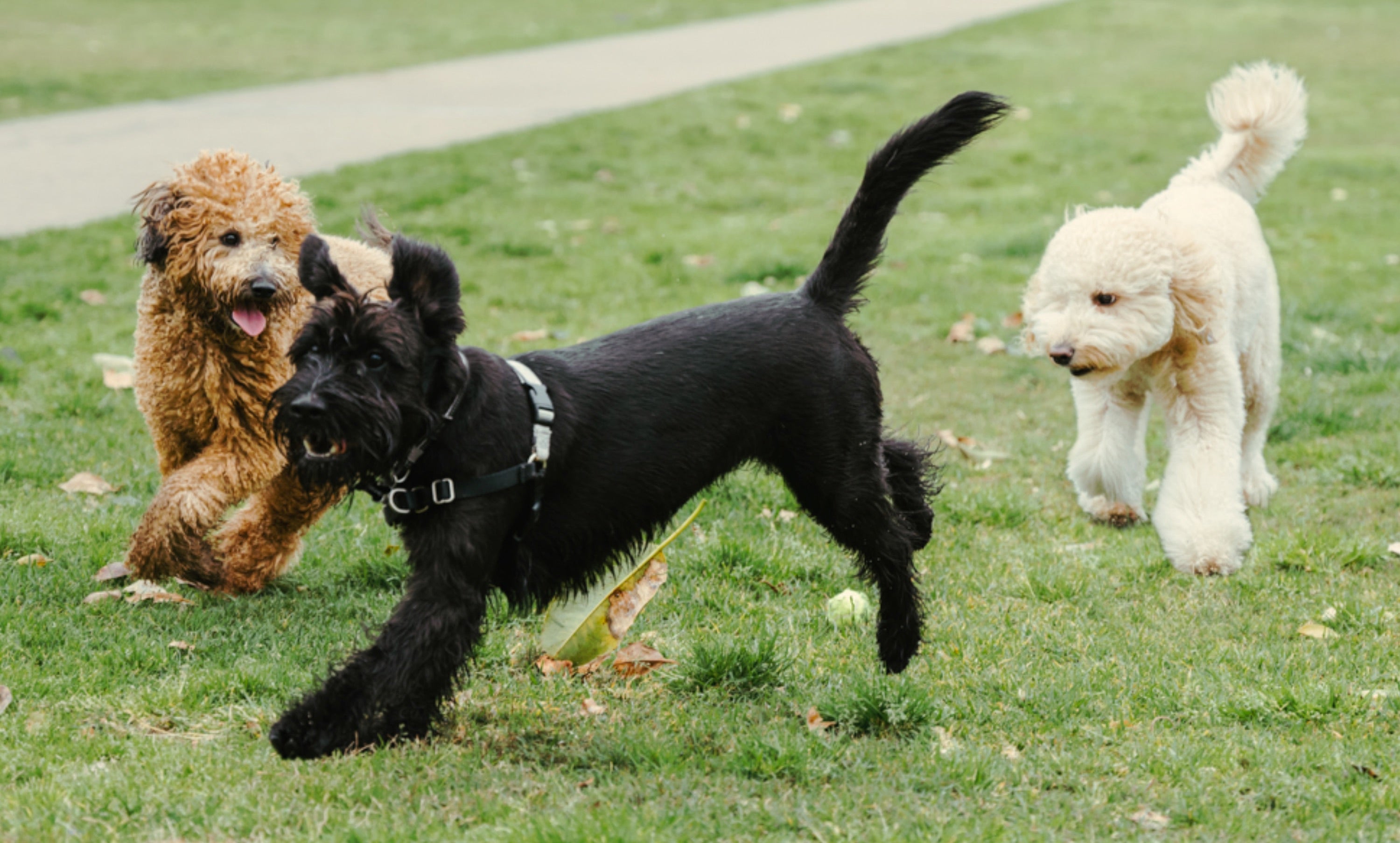Your On-The-Go Essentials.
Belt bag, compostable poo bags, compostable DOG wipes and a cologne of your choice

Free shipping for Australian orders over $99
Free shipping for AU orders over $99
Please select your store

We will include your personalised message on an elegant gift card and your order will be wrapped in a beautiful gift box.

Dogs are social creatures. But not all dogs are equally social. In fact, a dog’s sociability is as varied as ours; while some are definitive party animals, others are more exclusive and prefer to stick with a familiar pack. Some choose to avoid other dogs entirely.
Whatever your dog’s preference, it’s important to recognise and respect their unique social sensibilities.
No matter how well trained your dog is, the simple fact is that they are unpredictable. The lure of food or a fellow hound across the road can be more exciting than you. That’s why it’s important to leash your dog if you’re not exploring off-leash dog parks, and have a nice supply of treats handy (like in a Belt Bag) to help control and distract your dog.
Remember, we are ultimately responsible for our dog’s behaviour, good or bad. Some dog owners, while well intentioned, make the mistake of having their dog off lead while street walking. Their dog may be friendly and inquisitive but this can cause problems if they approach a reactive dog who is on lead, who may be potentially frightened or threatened by other dogs. A simple solution is to keep them leashed and ask fellow dog owners if their pooch would like a butt sniff. From your dog, obviously.
Socialisation is vital in your dog’s development but many people make the mistake of introducing their new puppy or dog to the dog park without first ensuring their dog is well-socialised. In fact, the dog park is what your dog should ideally graduate to.
Dog parks are not a safe place to socialise a puppy under 6-12 months old because they are more sensitive to experiences in their early months of life. A rambunctious greeter at the park may be enough to cause our puppy to be uncertain of all dogs.
The goal for socialising young puppies is to ensure they have only positive interactions, and to avoid any overwhelming or frightening interactions.
For older dogs or rescues it can be more complex considering they’ve been through their formative socialisation period. Having said that, walks on leads are a good option which will allow you to slowly introduce your dog to other leashed dogs little by little.
Does your dog return to you on cue? Well if you’re in an off-leash dog park, it’s absolutely vital they do. Recall should be practised continuously throughout your dog’s life. Thankfully, it’s relatively easy to train your dog to come when called, provided they know there’s ample treats available once they return to you.
Knowing basic dog body language can help you prevent scuffles and advocate for your dog.
Watch your dog’s body language to determine if they’re getting a bit uncomfortable: whether it’s glaring, tail tucking or growling, your dog will indicate their displeasure before turning aggressive. Yawning, licking their lips, shaking off, ears pinned back, raised shackles are all signals of discomfort. It’s up to us to recognise it.
If your local park has designated size areas to separate the big hounds from the petite pups you should stick to them as much as possible. Some dog parks tend to have a regular group of smaller or larger dogs, more boisterous or calmer, so pick a social gathering that best suits your dog’s personality.
Above all else, make the time you have with your dog meaningful and enriching. Remember, your dog wants to spend time with you too.

Can’t find an answer on our blog? Click here to ask Dr Lisa.